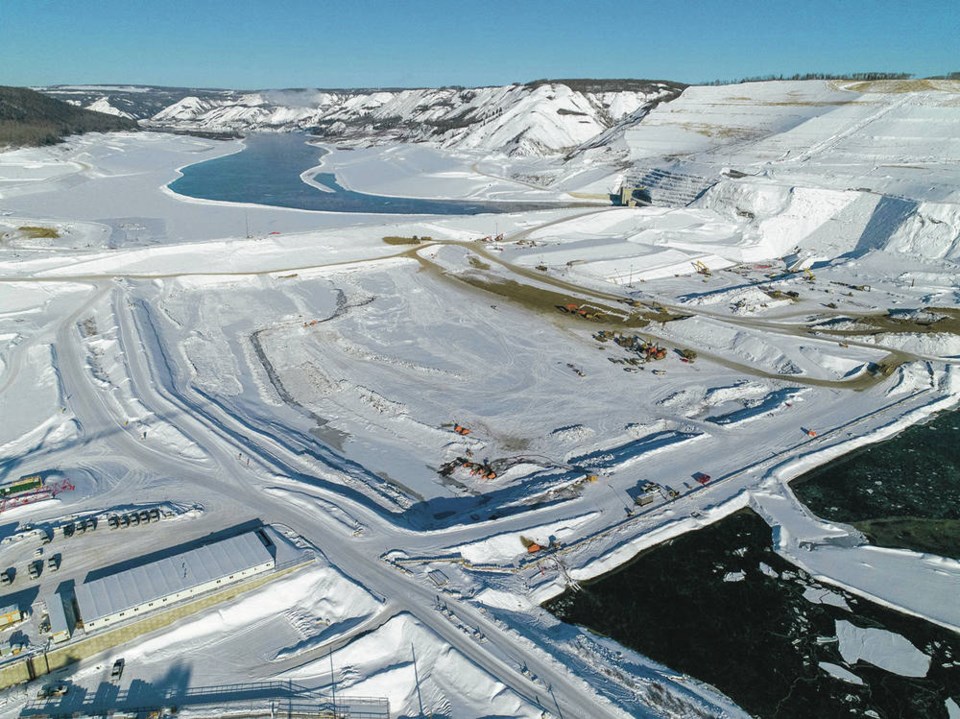Premier John Horgan is getting good at his “she-made-me-do-it, I’ve-got-no-choice” performance when it comes to the Site C dam.
He delivered an encore Friday of the performance he first gave in December 2017, when the NDP hit pause on the B.C. Liberal-initiated megaproject to consider options.
The sullen conclusion then was that former premier Christy Clark had achieved her goal of pushing the project past the point of no return. Billions would be wasted if the NDP government walked away.
Obviously it’s even further past that point today. Nonetheless, a status check was ordered up last year after the full scope of a problem with a serious fault under the riverbank emerged.
The full report released Friday by troubleshooter Peter Milburn made clear the riverbank isn’t the only place where there are tension cracks. The oversight and risk management of the job are rife with problems, and they have nothing to do with the previous government.
The oversight system that was unveiled by Horgan when he gave the grudging go-ahead three years ago is a flop. The independent board was left in the dark by B.C. Hydro. A consulting firm (Ernst and Young) that was to provide day-to-day scrutiny was sidelined and ignored.
The trouble with hiring professional second-guessers to nag and nit-pick B.C. Hydro about details is that the second-guessing, nagging and nit-picking gets annoying. B.C. Hydro doesn’t like annoyances.
Throw in a missed seasonal deadline for diverting the river and COVID-19 slowdowns and it adds up to a new budget that is nothing short of astonishing.
The original $8.3 billion budget in 2014 is just a fond memory, like house prices in the 1970s. The $10.7 billion budget that Horgan set firmly just three years ago is receding rapidly in the rear view mirror.
The new estimate is $16 billion. The $5.3 billion increase is about 700 per cent more than the backstop fund that Treasury Board set up for worst case scenarios.
There was bit less self-assurance than usual about the new price tag, because the geotechnical fix isn’t fully costed yet.
How can people keep straight faces when they’re putting cost estimates on megaprojects?
Horgan’s first move after the briefing was to blame Clark once again. He said on Twitter: “Christy Clark & BC Liberals promised to push Site C past a point of no return.”
He cited the unforeseen pandemic as well, which is fair game.
But the NDP has to own a share of this overrun. No government has ever approved a major project with less enthusiasm or confidence than Horgan displayed in 2017.
His announcement actually included a backgrounder on what a stupid idea Site C was.
His energy minister, nominally responsible for the job, had paddled the Peace River in protest against the project the previous year.
Most of Horgan’s cabinet holds the same resentful indifference to Site C. It looks like that attitude contributed to the management failure.
The NDP’s big contribution to the job was the project assurance board that would oversee the work “independently.” Milburn concluded the members weren’t up to the task. One chair of that outfit was the chair of B.C. Hydro. Another was deeply involved in the first years of construction.
So much for rigorous independence.
The paper tiger board was left out of the loop on the steady emergence of the geotechnical problem and “expressed surprise” in early 2020 when they finally learned how serious it was.
As for how B.C. Hydro handled the problem, Milburn said: “The geotechnical issues always existed. Despite decades of research, B.C. Hydro did not understand how these issues would manifest themselves in the design.”
Ernst and Young, hired for on-the-ground independent oversight, delivered a hard-hitting report on deficiencies. B.C. Hydro disagreed, the relationship deteriorated and B.C. Hydro tried to terminate the contract, then curtailed it considerably.
One vignette sums it up: The board and consultants sat down with B.C. Hydro in September 2020. The consultants had a slide with ideas on improving risk management.
“The meeting ended without EY allowed to present the slide,” said Milburn.
The underlying issue is that the NDP decided to continue the job without taking full ownership of it. They fobbed off oversight to consultants and appointees because they don’t care about it. It’s a recipe for shaky management that will continue until they realize they are completely responsible for the project, no matter who started it.



